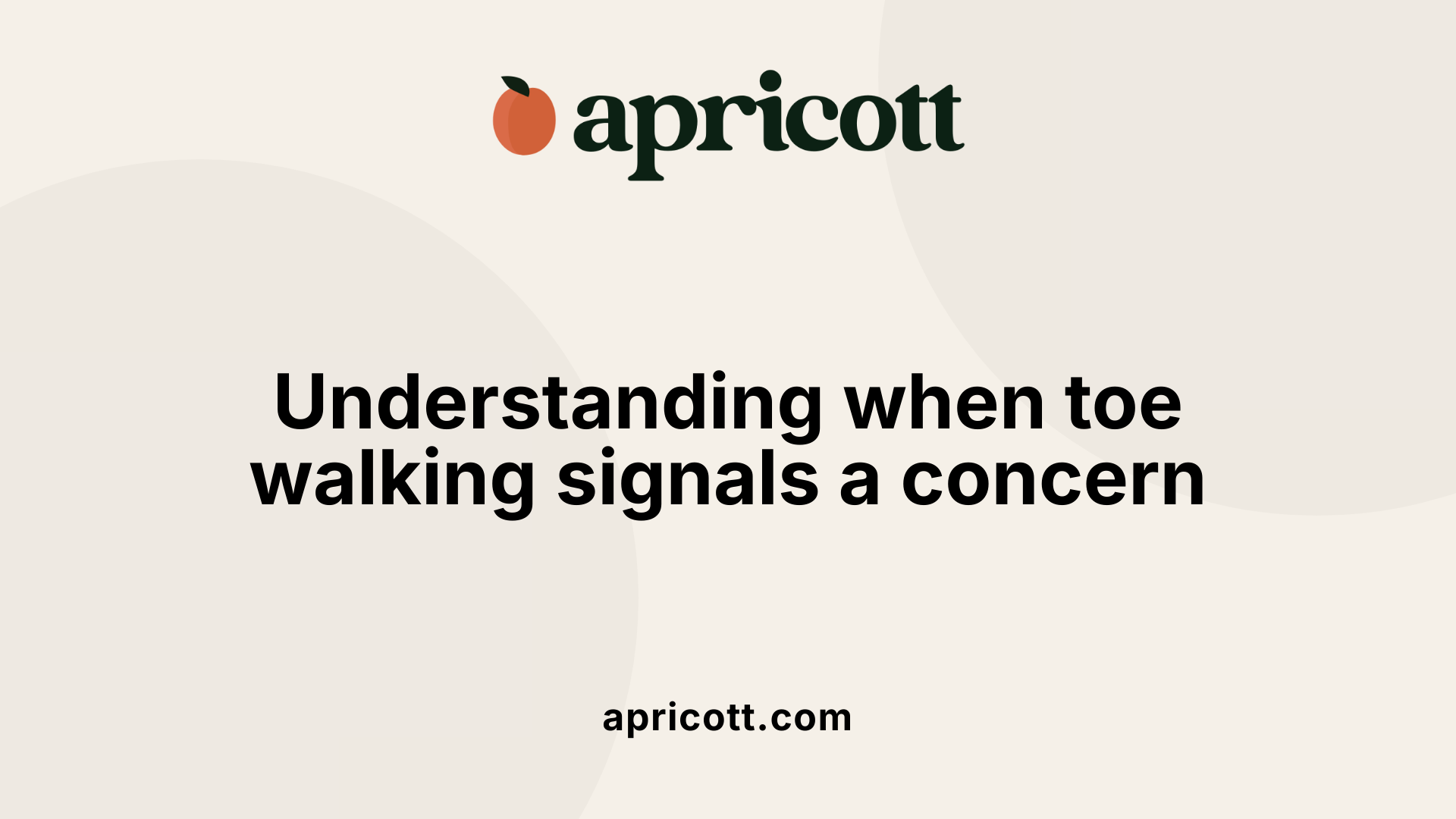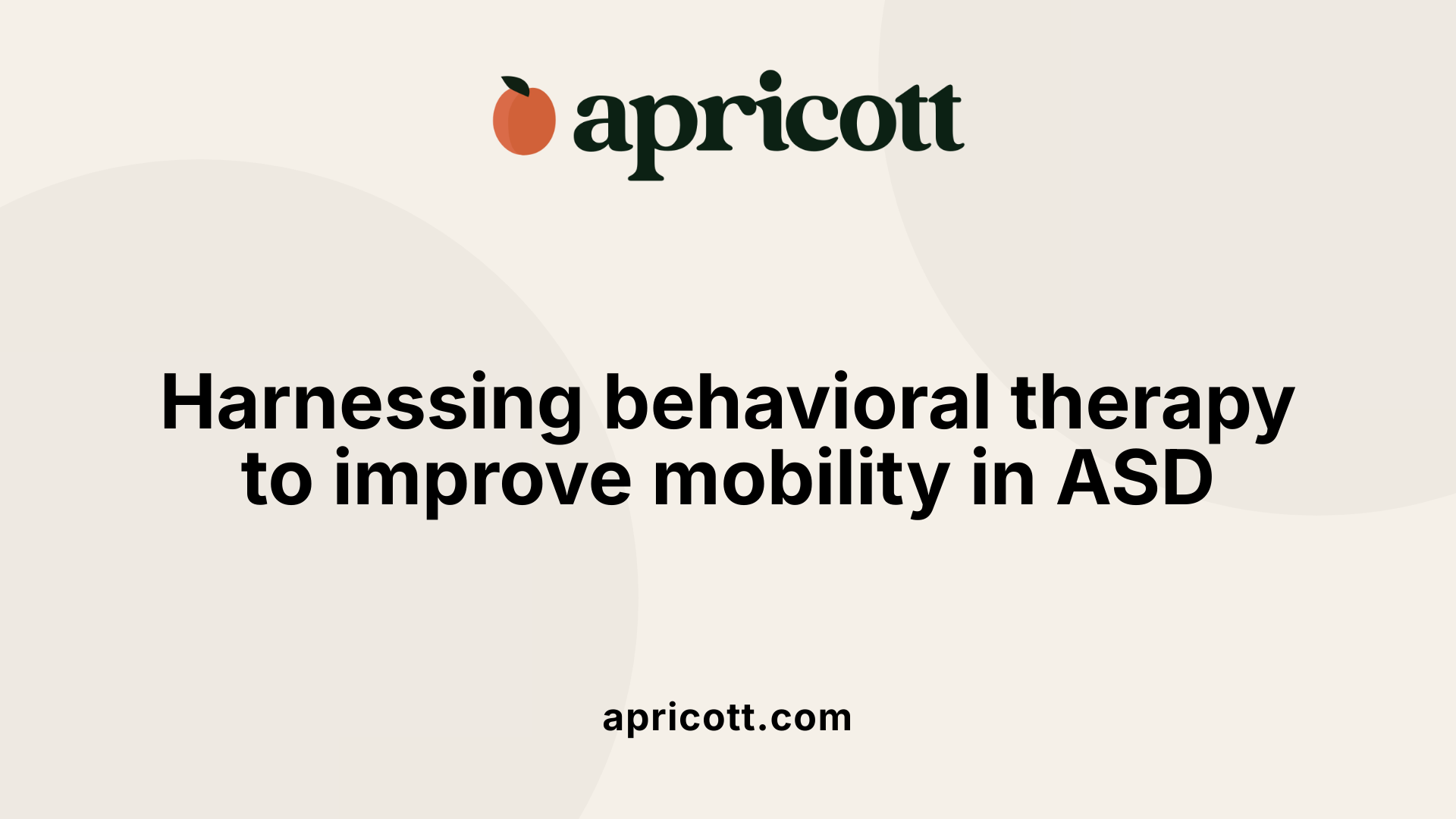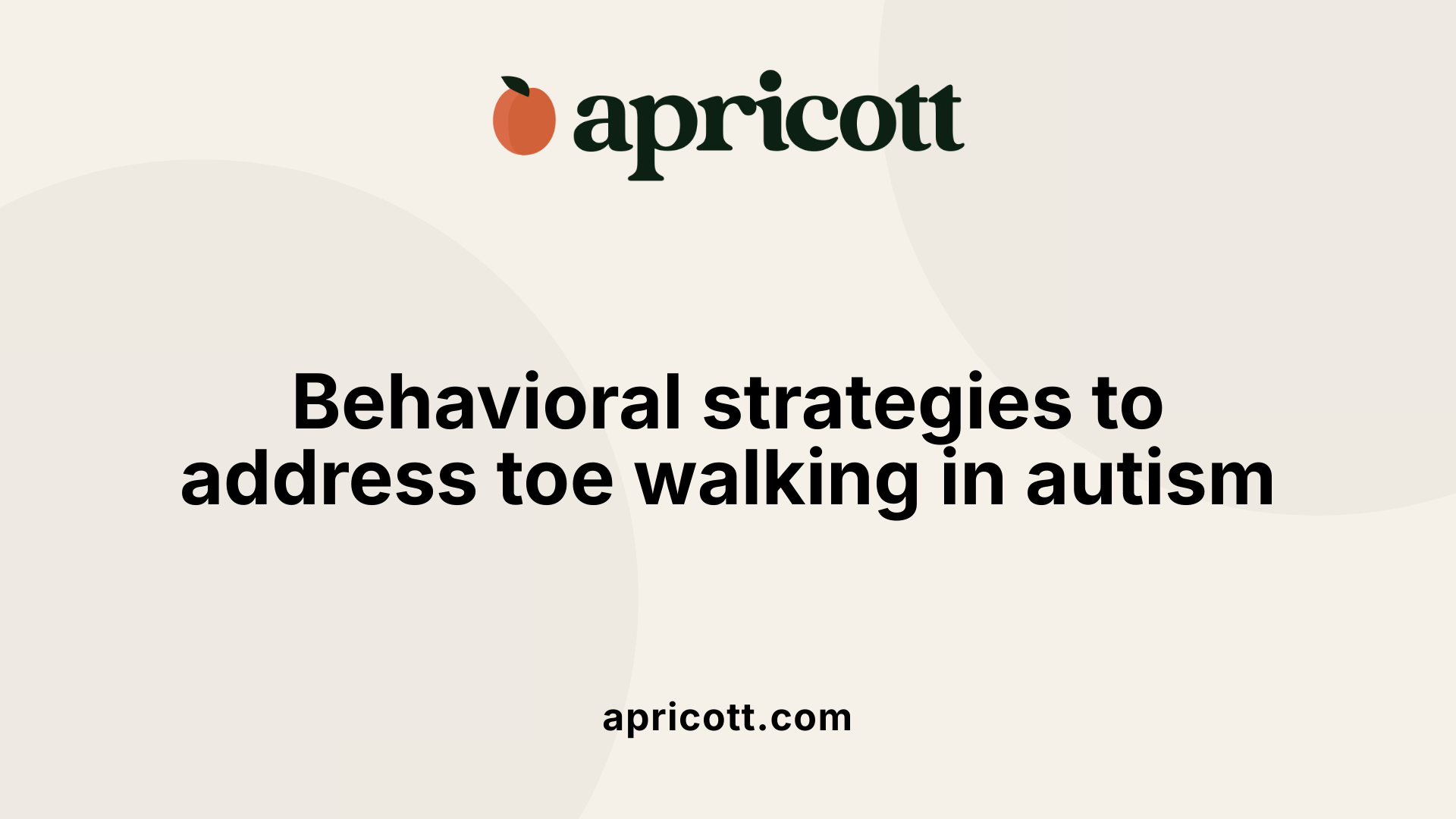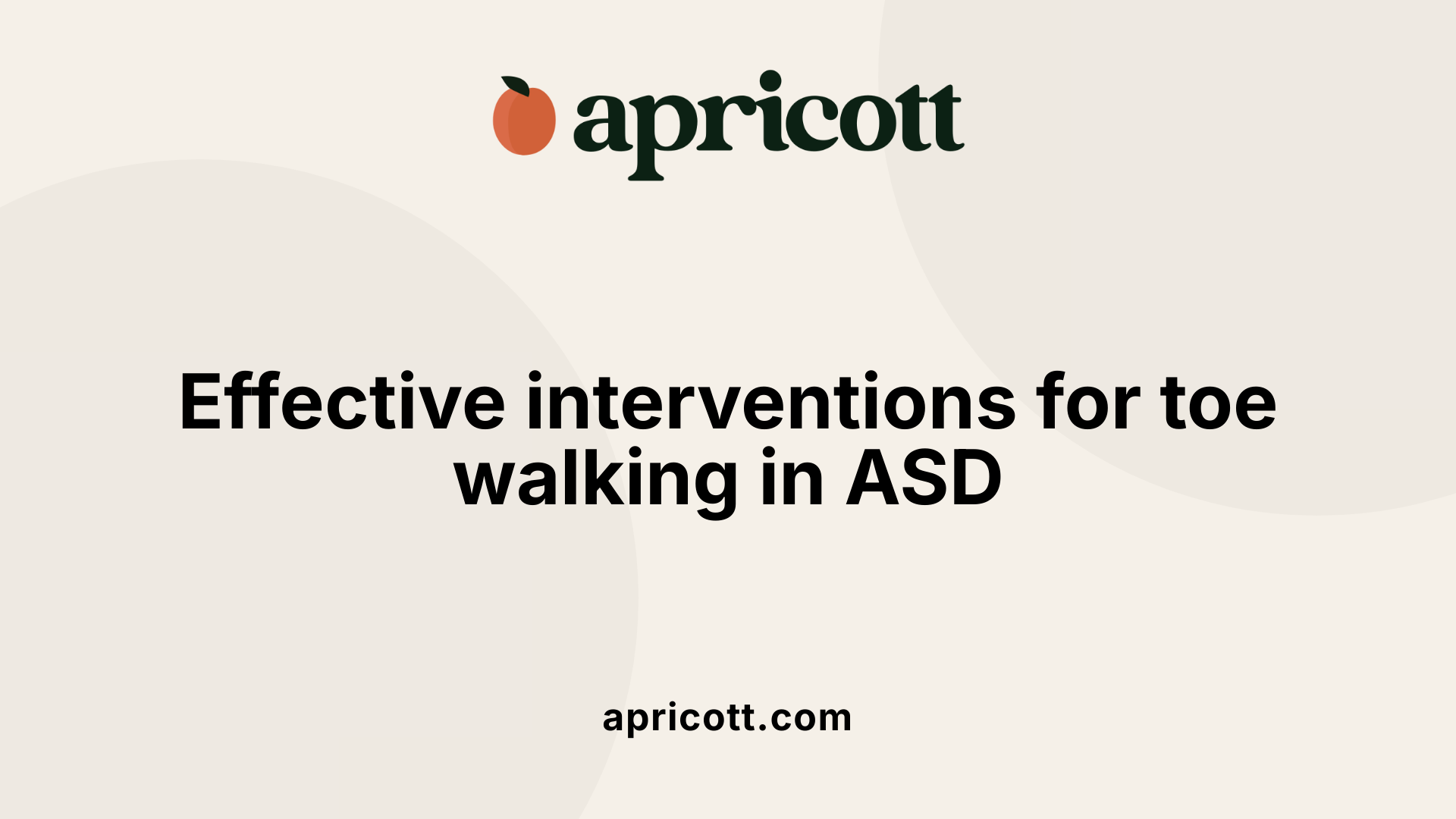December 2, 2025
Understanding and Addressing Toe Walking in Children with Autism Spectrum Disorder
Toe walking is a common gait pattern observed in children, including those with autism spectrum disorder (ASD). While it is often a developmental phase in young children, persistent toe walking beyond early childhood may indicate underlying neurological, musculoskeletal, or behavioral factors linked to ASD. This article explores the causes, implications, and treatment approaches for autism-related toe walking, emphasizing the role of behavioral therapy and interdisciplinary care to improve gait, mobility, and quality of life.
Toe walking is characterized by walking on the toes or the balls of the feet without making heel contact during walking. While this gait pattern is observed in many young children, especially under the age of three, it can also be persistent beyond typical developmental stages.
In the general population of children under the age of five, idiopathic toe walking (ITW)—where no medical cause is identified—affects approximately 2% to 5%. However, among children with autism spectrum disorder (ASD), the prevalence is significantly higher, with studies reporting rates up to 41%. A 2019 review noted about 9% of children with ASD demonstrate persistent or idiopathic toe walking, compared to less than 0.5% of neurotypical children.
Toe walking is often a normal developmental variation in toddlers aged three and under, typically resolving naturally as their motor skills mature. Persistent toe walking beyond age three becomes a concern as it may indicate underlying neurological, musculoskeletal, or sensory processing issues. In children with ASD, this gait may reflect sensory sensitivities or habitual behaviors linked to the disorder rather than physical abnormalities.
The patterns and prevalence of toe walking emphasize the importance of careful assessment in children with ASD to differentiate typical gait development from persistent toe walking that may require intervention.
Toe walking in children with autism spectrum disorder (ASD) often stems from a variety of neurological and musculoskeletal influences. Some children may develop tight or shortened Achilles tendons, which restrict ankle flexibility and promote walking on the toes. Additionally, motor impairments common in ASD, such as hypotonia (low muscle tone) and poor postural control, contribute to gait abnormalities including persistent toe walking.
Sensory processing variations play a significant role in toe walking among children with ASD. Dysregulation of sensory systems—including vestibular (balance), tactile (touch), proprioception (body position sense), and visual inputs—can cause discomfort or altered sensory experiences. Some children may adopt toe walking as a habitual pattern or as a response to sensory preferences, seeking certain stimuli or avoiding uncomfortable sensations through this unique gait.
Persistent toe walking can also reflect psychological behaviors seen in ASD, such as contact refusal with the external environment. Walking on tiptoes without an underlying medical cause might indicate a form of withdrawal or resistance to full-foot ground contact. This behavior is often linked with the child's sensory preferences and habitual movement patterns, manifesting as a means of coping with or controlling their environment.
Children with ASD exhibit a greater prevalence of toe walking due to multiple overlapping factors. These include physical issues like tight heel cords and neurological differences affecting motor coordination. Sensory system dysregulation involving touch, proprioception, and vision also contribute to this gait. Furthermore, psychological behaviors manifesting as contact avoidance or sensory seeking reinforce toe walking patterns, illustrating its complex and multifactorial nature in ASD.

Persistent toe walking, especially in children with autism spectrum disorder (ASD), can lead to several notable physical issues. One of the most common complications is the shortening of the Achilles tendon. This tightening reduces the flexibility of the foot and ankle, which can negatively impact gait and posture.
Toe walking places abnormal stress on the muscles and joints, particularly those in the lower leg and foot. Over time, this can cause joint deformities and foot pain. The decreased ankle dorsiflexion angle often observed in these children limits their ability to achieve a neutral gait, potentially exacerbating musculoskeletal imbalances.
Children who persistently toe walk typically fail to make heel contact during walking, leading to an abnormal bilateral toe-to-toe gait. This gait pattern affects balance and postural control, making coordinated movements more challenging. These difficulties are compounded in ASD children who often experience hypotonia and sensory integration issues, further affecting their mobility.
Without intervention, persistent toe walking may result in decreased physical activity due to discomfort or mobility limitations. This sedentary tendency can contribute to broader health concerns. Additionally, abnormal walking patterns may produce chronic musculoskeletal problems, and reduced functional mobility could impair a child's overall quality of life.
| Complication | Description | Impact on ASD Children |
|---|---|---|
| Shortened Achilles tendons | Tightening limits ankle flexibility | Alters gait, requiring therapeutic intervention |
| Reduced foot/ankle flexibility | Restricts normal movement during walking | Leads to abnormal posture and balance issues |
| Joint deformities | Structural bone and joint changes due to stress | May cause chronic pain and mobility challenges |
| Abnormal gait patterns | Walking on toes without heel contact | Impairs efficient locomotion and physical activity |
| Balance and posture issues | Disrupts coordinated motor control | Exacerbates existing hypotonia and sensory processing difficulties |

Toe walking is a normal part of development for many children aged three and under. In most cases, this behavior resolves naturally as the child grows and improves their motor skills. During these early years, toe walking typically does not indicate any underlying health issues.
Intervention becomes necessary when toe walking persists beyond the age of three. Persistent toe walking may signal more complex developmental concerns, including neurological or musculoskeletal problems. In particular, if a child continues to walk on their toes beyond this age, a healthcare professional should evaluate the condition to determine if treatment is required.
When toe walking lasts beyond the typical age range, it may be linked to various conditions, especially autism spectrum disorder (ASD). Children with ASD often exhibit persistent toe walking that can reflect underlying sensory processing differences or tight heel cords. Other potential causes include shortened Achilles tendons, cerebral palsy, or muscular dystrophy. Recognizing these signs early allows for timely intervention.
Toe walking is generally only concerning if it persists past age three. At that point, it could indicate neurological, musculoskeletal, or developmental conditions such as ASD. Early assessment helps guide appropriate therapies to improve gait and mobility.

Applied Behavior Analysis (ABA) therapy is a widely recognized, evidence-based method aimed at improving socially important behaviors in children with autism spectrum disorder (ASD). It works by carefully assessing the individual's specific needs and setting targeted goals. ABA employs various techniques like positive reinforcement, prompting, and shaping. These methods encourage development in communication, social skills, and daily living abilities, while simultaneously reducing problematic behaviors.
Behavioral therapy, including ABA, plays a critical role in autism care by addressing both social and developmental challenges. It can be tailored to each child’s unique profile, helping to enhance functional skills and promote independence. Behavioral strategies also complement medical interventions, such as those used for physical concerns like toe walking in ASD children. For example, reinforcement and feedback techniques can improve gait patterns alongside therapies including physiotherapy and serial casting.
Starting behavioral therapy early in a child's life is vital. Early and consistent intervention correlates with better developmental outcomes in cognition, language, and overall functioning. Because children with ASD may face motor coordination and sensory issues affecting behaviors like toe walking, early behavioral support can also reduce secondary complications and improve quality of life.
This integrative approach underlines the importance of collaboration among behavioral therapists, medical professionals, families, and educators to provide comprehensive care tailored to each child's needs.
Behavioral therapy for autism is delivered by a range of licensed and certified professionals proficient in evidence-based autism interventions, particularly Applied Behavior Analysis (ABA). These providers include specialized therapy companies, clinical therapists, licensed behavior analysts, and dedicated autism centers such as the Center for Autism and the Developing Brain (CADB).
Therapy services are offered in diverse settings to accommodate the needs of individuals with autism. These include outpatient clinics, specialized treatment centers, schools, and sometimes home-based programs. The variety of environments helps ensure that therapy can integrate into everyday routines, enhancing generalization and effectiveness.
Family involvement is crucial in behavioral therapy, as caregivers often support and reinforce therapeutic strategies at home. Additionally, a multidisciplinary team approach—incorporating psychologists, physiotherapists, occupational therapists, and medical professionals—optimizes outcomes for children with autism by addressing their comprehensive developmental needs. For example, combining behavioral therapy with physical and sensory interventions is vital for conditions such as toe walking linked to ASD.
Behavioral therapy for children with autism spectrum disorder (ASD) focuses on improving several foundational areas to enhance overall quality of life. The primary goals include:
Communication Skill Development: Helping children express needs, emotions, and thoughts effectively through verbal or alternative communication methods.
Enhancement of Social Interaction: Encouraging meaningful social engagement and understanding of social cues to build relationships.
Promotion of Independence and Daily Living Skills: Teaching self-care routines, motor skills, and academic tasks to support everyday functioning.
These goals are achieved by increasing useful behaviors and reducing problematic ones through structured teaching methods combined with positive reinforcement techniques. Behavioral therapy addresses a broad range of skills including motor coordination and emotional regulation, which are essential for children with ASD to navigate daily life with confidence and improved functional ability.

Behavioral therapy for autism typically employs Applied Behavior Analysis (ABA) methods that are designed to teach functional skills and reduce undesired behaviors through structured and supportive approaches.
One frequently used technique is Discrete Trial Training (DTT). DTT breaks down skills into small, teachable units and uses repeated trials with clear prompts and rewards to encourage learning specific behaviors. It offers a controlled environment where children receive immediate feedback.
Another approach is Pivotal Response Training (PRT), which targets pivotal areas such as motivation and response to multiple cues. PRT is more naturalistic and child-directed, encouraging engagement through interests and rewards.
Natural Environment Teaching (NET) involves teaching skills in everyday settings, helping children apply what they learn in therapy to real-life situations. This method reinforces learning through natural consequences and interactions.
Visual supports like picture schedules or symbols are often used to enhance understanding and communication. These aids help make routines more predictable for children, reducing anxiety and improving compliance.
Reinforcement strategies are central to these techniques. Positive reinforcement, including rewards such as praise, tokens, or preferred activities, encourages desired behaviors. Establishing consistent routines also supports skill acquisition and behavior management by creating structure and clarity.
Together, these methods create a comprehensive behavioral therapy framework that supports children with autism in developing essential social, communicative, and adaptive skills.
Behavioral therapy, while widely used for autism, has been met with critiques regarding its intensity and underlying goals. Critics argue that some behavioral interventions can be excessively intensive, and their primary focus on modifying or suppressing autistic behaviors might not always consider the individual's emotional wellbeing.
This approach can lead to emotional distress or burnout in some children, as the pressure to conform to neurotypical behaviors may result in "masking"—hiding autistic traits to fit in socially. Masking is associated with increased anxiety, depression, and reduced self-identity, raising concerns about the long-term mental health impact of such therapies.
These criticisms highlight the importance of embracing neurodiversity—the understanding that neurological differences are natural human variations rather than deficits. As a result, many advocate for personalized, strengths-based approaches that support authentic identity and accommodate sensory and behavioral preferences rather than enforcing conformity.
In summary, while behavioral therapy can be effective for improving functional skills, its challenges lie in balancing therapeutic goals with respect for the individual's emotional health and self-expression. Integrating neurodiversity-informed perspectives ensures that interventions are compassionate, respectful, and tailored to each child's unique needs.
Behavioral treatments for idiopathic toe walking (ITW) in children with autism spectrum disorder (ASD) focus on modifying gait through targeted strategies that complement medical interventions. These include reinforcement-based techniques that reward heel contact and discourage toe walking, helping children develop more typical walking patterns over time.
Another approach involves auditory feedback, where sounds cue the child to adjust their foot placement. This method, along with overcorrection procedures (which temporarily increase effort or provide corrective input after toe walking episodes), helps children become more aware of their gait and promotes heel contact.
Use of heavy-weighted boots serves as a sensory-based intervention, providing proprioceptive input that encourages foot flattening during walking. Caregivers have rated interventions like auditory feedback and weighted boots highly for their effectiveness, highlighting their potential as non-invasive, supportive therapies.
Combining behavioral therapies with medical treatments such as serial casting, botulinum toxin injections, and orthoses creates a multidisciplinary approach that addresses both physical and sensory aspects of toe walking. This integrated strategy can improve functional mobility and reduce persistent toe walking in children with ASD.
The 'Cast and Go' protocol is a multidisciplinary treatment designed specifically to address toe walking in children with autism spectrum disorder (ASD). This method combines several interventions to achieve a neutral ankle position and restore a typical gait pattern. The treatment involves botulinum toxin injections, serial casting, orthoses, and targeted physiotherapy.
Botulinum toxin helps reduce muscle tightness by temporarily relaxing the calf muscles that contribute to tiptoe walking. Following this, serial casting is applied to gradually stretch the tight sural muscles and Achilles tendons in coordination with the child's bone growth. Casts are replaced periodically to increase ankle dorsiflexion incrementally. Orthoses are then used to maintain the corrected position and support proper foot alignment.
Physiotherapy plays a vital role in this protocol, focusing on improving muscle strength, balance, and postural control to reinforce the corrected gait. This comprehensive approach addresses both the physical and neurological components of toe walking in ASD.
Clinical studies involving 22 children with ASD and idiopathic toe walking have demonstrated the effectiveness of the 'Cast and Go' protocol. Results show significant improvements in ankle dorsiflexion angles and achievement of a neutral gait without adverse events reported. Treatment duration varies based on baseline dorsiflexion angles, with greater tightness requiring more casting sessions. Notably, younger children tend to have better long-term outcomes, while older children may experience higher recurrence risks.
This integrated therapy underscores the importance of combining medical interventions with physical rehabilitation to manage toe walking effectively in children with ASD.

Treatment duration for toe walking correction in children with autism spectrum disorder (ASD) is closely linked to the baseline ankle dorsiflexion angle. Children exhibiting a larger dorsiflexion deformity typically require more serial casts to gradually stretch the tight sural muscles, resulting in a longer treatment period. This staged approach aligns muscle stretching with bone growth to reduce discomfort and enhance correction effectiveness.
Age plays a pivotal role in the long-term success of toe walking interventions. Younger children generally exhibit more favorable outcomes, with a reduced tendency for the toe walking pattern to return after treatment. In contrast, pre-adolescents face a higher risk of recurrence, suggesting that earlier intervention may improve lasting correction. This emphasizes the importance of timely recognition and management of idiopathic toe walking in ASD.
Effective treatment of toe walking in children with ASD demands a comprehensive, multidisciplinary effort. Collaboration among physiotherapists, psychologists, medical personnel, and family members ensures that both physical and behavioral aspects are addressed. The 'Cast and Go' protocol exemplifies this approach by combining botulinum toxin, serial casting, orthoses, and physiotherapy, alongside behavioral support to encourage compliance and address sensory integration challenges. Such integrated care models improve the likelihood of restoring a neutral ankle position and achieving a functional, natural gait.
The management of toe walking in children with autism spectrum disorder (ASD) benefits significantly from an integrated approach combining behavioral, physical, and medical therapies. Medical treatments like the 'Cast and Go' protocol—incorporating botulinum toxin injections, serial casting, orthoses, and physiotherapy—aim to correct the ankle position and restore neutral gait. Concurrently, behavioral therapies, including sensory integration strategies and reinforcement-based interventions, help address the habitual and sensory-related aspects of toe walking common in ASD. Physical therapies focus on improving muscle flexibility, strength, and coordination, helping to alleviate secondary complications such as shortened Achilles tendons or postural imbalances. Together, these therapies complement one another to optimize treatment outcomes.
Family involvement and psychological support are crucial in managing toe walking associated with ASD. Psychological behaviors, such as a refusal of contact with the outside world, may underlie some cases of toe walking. Therefore, engaging caregivers and providing them with education about the condition and treatment options improves treatment compliance and effectiveness. Psychologists working alongside physiotherapists and medical staff can help address behavioral components, ensuring a supportive environment for children to develop functional mobility. A multidisciplinary effort that includes family support enhances both emotional wellbeing and adherence to treatment protocols.
An interdisciplinary approach that integrates medical, behavioral, and physical therapies, supported by active family participation, enhances functional mobility and overall quality of life for children with ASD experiencing toe walking. Correcting gait abnormalities through medical protocols like 'Cast and Go,' combined with sensory and behavioral interventions, reduces discomfort and prevents long-term complications such as joint deformities. This multifaceted care improves balance, posture, and coordination, facilitating more typical movement patterns. Ultimately, coordinated multidisciplinary care empowers children to engage more fully in daily activities and social interactions, promoting independence and wellbeing.
Persistent toe walking in children with ASD often leads to physical complications like shortened Achilles tendons and decreased ankle flexibility, which can impair mobility. Early intervention using combined therapies such as physical therapy, orthotic support, and serial casting can effectively restore a neutral ankle position and typical heel-toe gait. Techniques like the 'Cast and Go' protocol, which include botulinum toxin injections and serial casting, have demonstrated success in improving ankle dorsiflexion angles and promoting a neutral gait in children with ASD.
Sensory processing differences commonly contribute to toe walking behaviors in ASD. Children may walk on tiptoes as a response to sensory preferences or discomfort related to touch, proprioception, or vestibular processing. Integrating sensory strategies alongside physical therapy helps address these underlying issues. Approaches involving occupational therapy and sensory integration techniques aim to improve postural control and reduce reliance on toe walking as a habitual movement.
Children with ASD frequently experience hypotonia and coordinated motor impairments affecting gait and posture. Multidisciplinary therapy teams—including physiotherapists and psychologists—work collaboratively to strengthen muscle tone and enhance motor coordination. Serial casting gradually stretches tight muscles, allowing bone growth and preventing deformities. Additionally, behavioral interventions complement physical treatments to reinforce functional mobility, increasing balance and overall motor skills essential for everyday activities.
Persistent toe walking in children with autism is a multifaceted issue involving sensory, neurological, musculoskeletal, and behavioral components. Effective management relies on a holistic, interdisciplinary approach combining behavioral therapy techniques such as Applied Behavior Analysis with medical and physical treatments, including protocols like 'Cast and Go'. Early identification and intervention enhance outcomes, minimizing physical complications and improving mobility. Ongoing research and individualized care models are essential to address the complexities and improve long-term quality of life for children affected by autism-related toe walking.